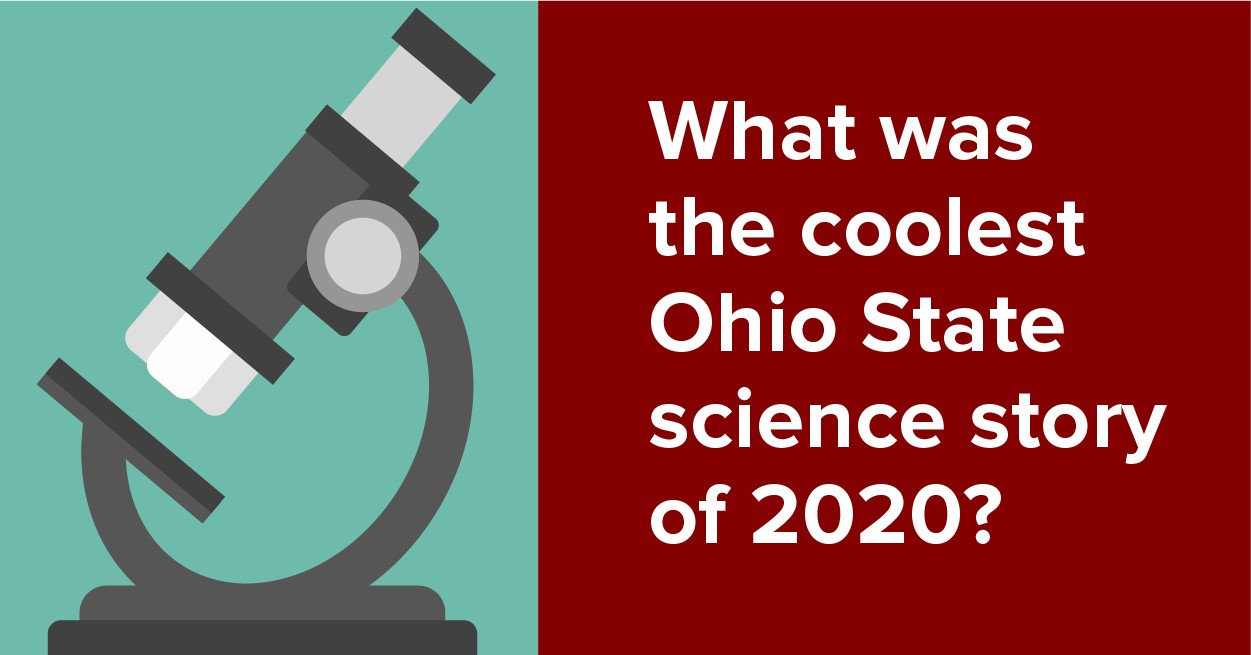Which Ohio State science story was the coolest?
Help us decide: Vote today for your favorite of 2020
Let’s take a deep, collective breath for the wild ride that was 2020. It was a year in which hardly anything felt normal – a year in which we had to change a lot in our lives to deal with a worldwide pandemic. But it was also a year in which science shined. The pandemic gave us a deeper appreciation for the kind of basic science that sets the stage for life-altering discoveries like the vaccine to the COVID-19 virus – a virus that humans discovered just about 12 months ago.
Science happens every day at The Ohio State University. In 2020, Ohio State researchers published more than 20,000 journal articles. Ohio State News wrote about 180 of them – on topics ranging from vampire bats to climate change to the ways people make decisions. And while we think all the studies we wrote about were pretty awesome, we wanted to know – just for fun, for bragging rights, and for this really great trophy – which of those stories was the coolest.
We asked you to help us decide which story was the coolest. Thank you for voting! The polls are now closed. Stay tuned to find out who won, and in the meantime, scroll through the videos below to hear the researchers talk about their discoveries and read the stories about their work.
This year’s finalists:
How good gut bacteria help reduce the risk for heart disease: Scientists discovered that one of the good bacteria found in the human gut has a benefit that has remained unrecognized until now: the potential to reduce the risk for heart disease.
Babies mimic songs, study finds: Researchers — and parents — have long known that babies learn to speak by mimicking the words they hear. But a study this year showed that babies also might try to imitate the singing they hear in songs.
People love winning streaks by individuals — teams, not so much: People enjoy witnessing extraordinary individuals – from athletes to CEOs – extend long runs of dominance in their fields, this study suggested. But they aren’t as interested in seeing similar streaks of success by teams or groups. The reason? Individual success inspires awe in a way that group success does not.
Soft robots, origami combine for potential way to deliver medical treatments: Researchers found a way to send tiny, soft robots into humans, potentially opening the door for less invasive surgeries and ways to deliver treatments for conditions ranging from colon polyps to stomach cancer to aortic artery blockages. The robots make use of the ancient Japanese practice of origami.
Humans are born with brains ‘prewired’ to see words: Humans are born with a part of the brain that is prewired to be receptive to seeing words and letters, setting the stage at birth for people to learn how to read, this study suggested.


